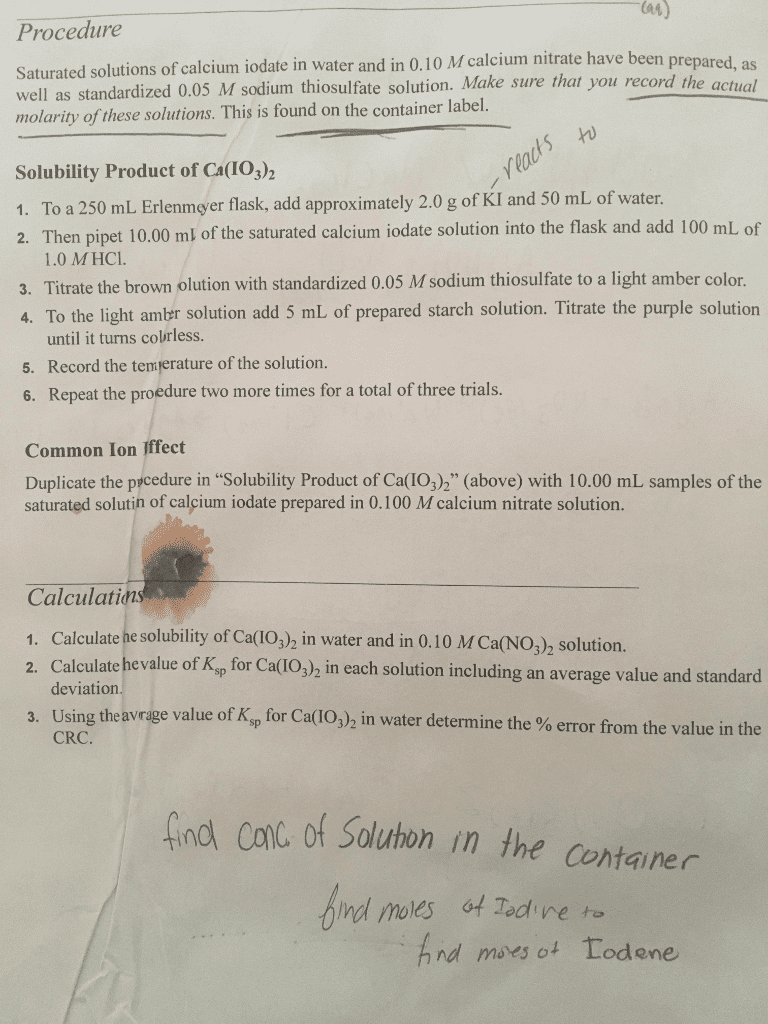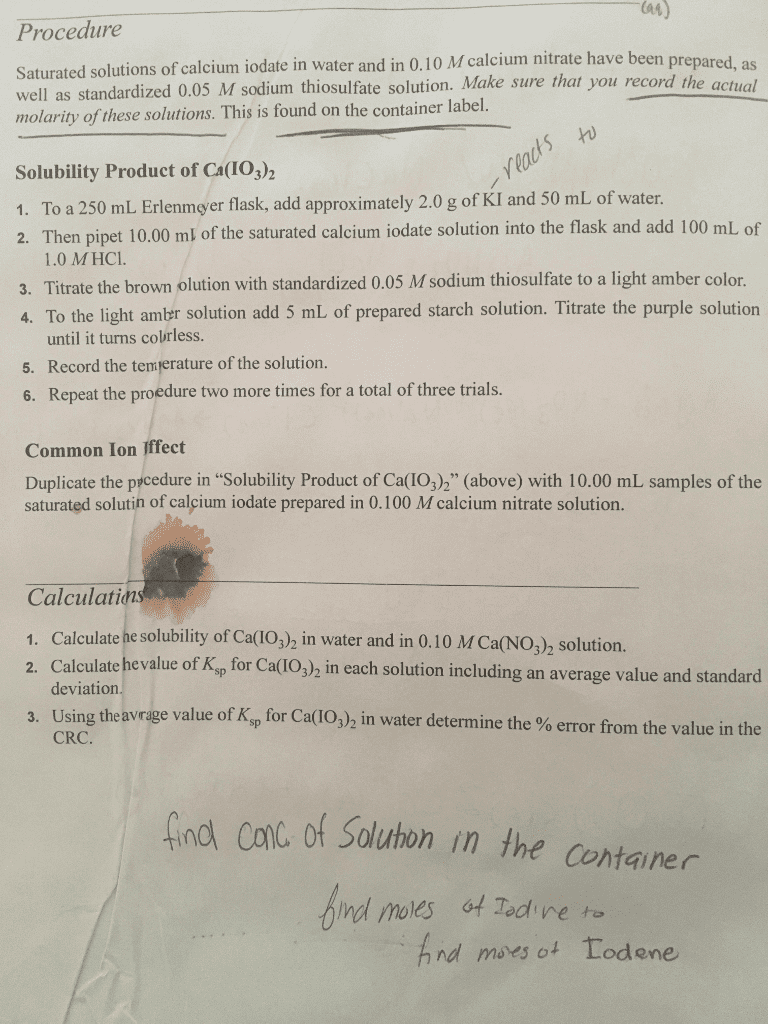A saturated solution of calcium iodate, Ca(IO3)2, is created by suspending a small amount of pure solid of Ca(IO3)2 in 50.0 mL of distilled water. After allowing equilibrium to be established, a 10.0-mL sample of the saturated solution is pipeted into an Erlenmeyer flask, and about 20 mL of de-ionized water is added to this sample, followed by about 1 cm3 of solid KI and 1 mL of 2.0 M HCl. The addition of excess KI and HCl converts all of the IO3- present in the sample to molecular iodine according to the following equation.IO3-(aq) + 5 I-(aq) + 6H+(aq) ? 3 I2(aq) + 3H2O(l) (Eqn-1) The iodine produced by the above reaction is then titrated with 0.0250 M Na2S2O3 using starch indicator, which requires 29.0 mL of 0.0250 M Na2S2O3 to reach end-point. The stoichiometric reaction between iodine and thiosulfate is represented by the following net ionic equation.I2(aq) + 2 S2O32
A saturated solution of calcium iodate, Ca(IO3)2, is created by suspending a small amount of pure solid of Ca(IO3)2 in 50.0 mL of distilled water. After allowing equilibrium to be established, a 10.0-mL sample of the saturated solution is pipeted into an Erlenmeyer flask, and about 20 mL of de-ionized water is added to this sample, followed by about 1 cm3 of solid KI and 1 mL of 2.0 M HCl. The addition of excess KI and HCl converts all of the IO3- present in the sample to molecular iodine according to the following equation.IO3-(aq) + 5 I-(aq) + 6H+(aq) ? 3 I2(aq) + 3H2O(l) (Eqn-1) The iodine produced by the above reaction is then titrated with 0.0250 M Na2S2O3 using starch indicator, which requires 29.0 mL of 0.0250 M Na2S2O3 to reach end-point. The stoichiometric reaction between iodine and thiosulfate is represented by the following net ionic equation.I2(aq) + 2 S2O32







